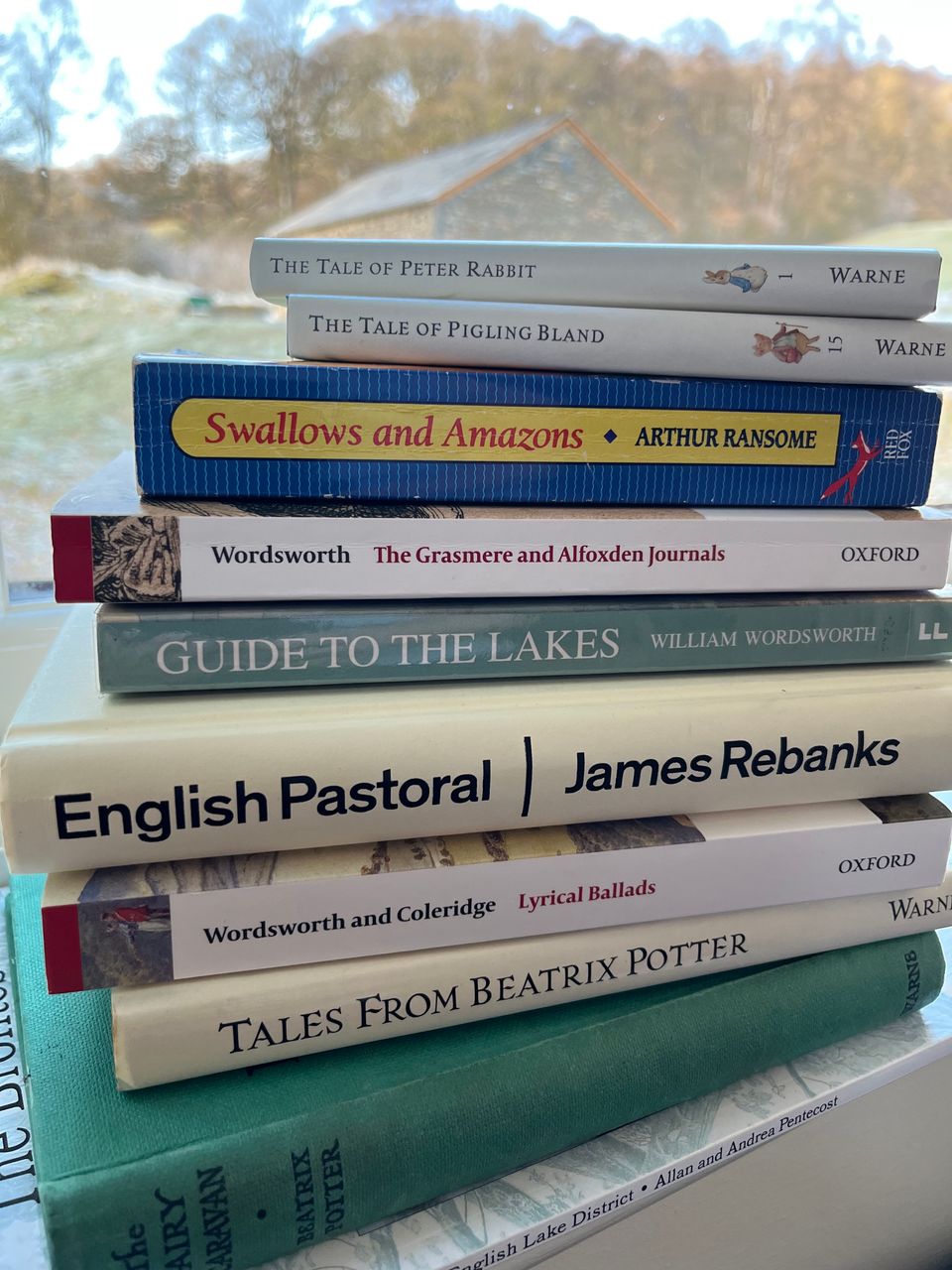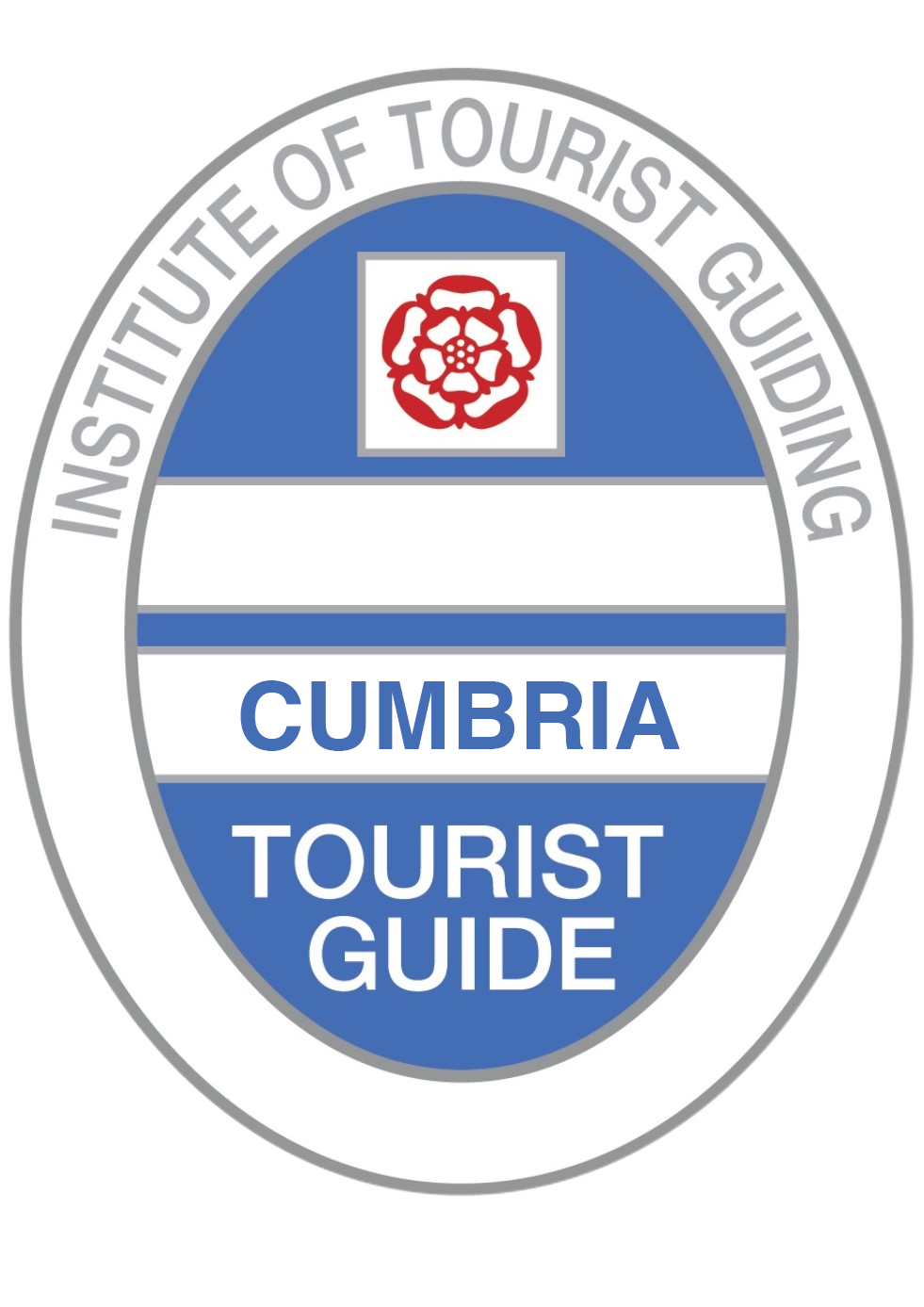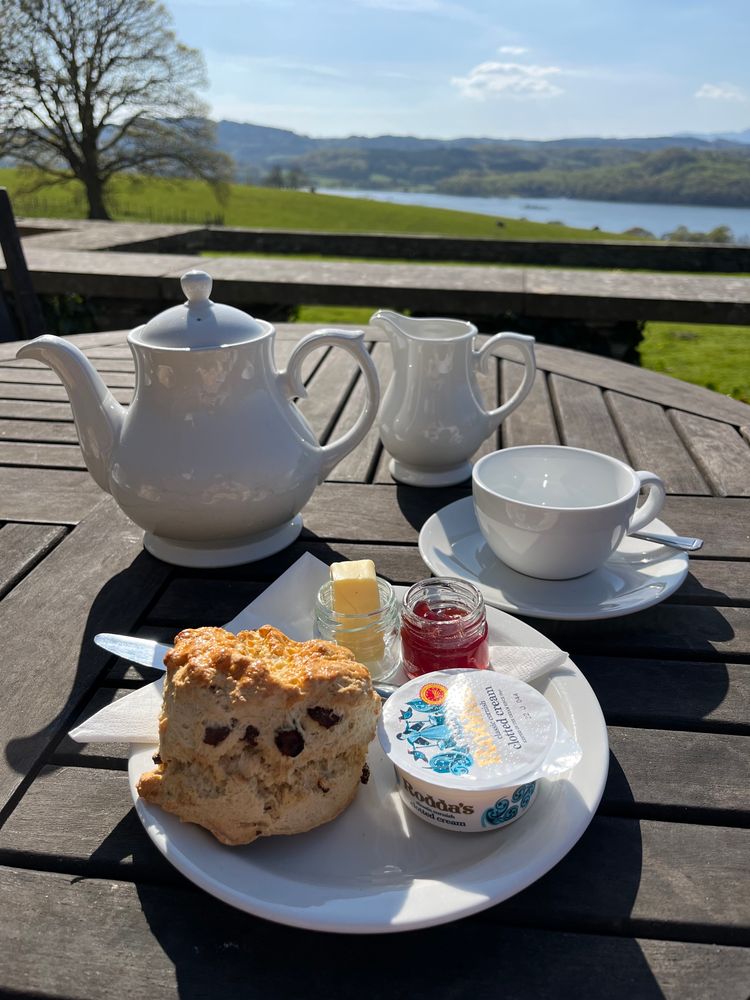Visiting the Lake District? What's on your reading list?!

Before I made a permanent move to the Lake District the most important things to bring with me were OS maps, waterproofs, walking boots, and my bike! I had been holidaying in the south Lake District for 30 years before I had the opportunity to become a resident. Settling in to this beautiful region with new seeing eyes and a thirst for knowledge I decided to undertake rigorous training and became a qualified Blue Badge Tourist Guide. Now I'm also a volunteer at Dove Cottage and the Wordsworth Grasmere museum and have developed a theory to "let nature be your teacher", a phrase coined by Willam Wordsworth.
It's easy to see why with the ever changing weather, often four seasons in just one day, the dramatic landscape is a place of inspiration for photographers, artists and writers, as it has been for about 250 years. When Thomas West wrote his "Guide to the Lakes of Cumberland, Westmorland and Lancashire" in 1778 the tourism industry was certainly not as we know it today. For the wealthy English the go-to holiday destination would have been to Europe for the "The Grand Tour" - not around the Lake District to see England's longest lake or highest mountain or its hidden gems. With the French Revolution and things heating up (not in a good way) between France and England the tourists needed to look closer to home for their annual vacation, but the Lake District? No, it was deemed to be a frightening place but West suggested the Lake District was not too unlike the Alps - albeit a miniature version. It was to be the very first official guide book to attract visitors to the Lakes and he set about introducing a route around the Lakes that included "Viewing Stations". These were specific places where the visitor's attention would be focused on the view. Now here's an interesting thing. You would need to stand with your back to the view to appreciate it! They would simply hold a Claude Glass which would be about the size of a make-up mirror - but you can try this for yourself by using the black screen of your mobile phone - look at it reflecting the view behind you, not in multicolour but in subdued shades and tones.
Such a viewing station is at Claife - on the opposite shore of Windermere just a very short walk from the car ferry from Bowness. It is now looked after by the National Trust, open all day, all year round and is free of charge. There are now colourful panels of stained glass acting as a frame to its windowless centre - look through the blue panel to visualise a cold scene in Winter - each panel suggests how the view would look in a different season.
Visitors to the Lake District may hear frequent references to writers William Wordsworth and Beatrix Potter. Perhaps like me, as a child you learnt "The Daffodils" at school but not about the man behind the words, and that Beatrix Potter wrote The Tale of Peter Rabbit amongst many other of her little pocket sized stories about mischievous little animals but never thought of either Wordsworth or Potter as being serious players in the preservation of the Lake District and latterly the formation of the National Trust.
My own children grew up loving Postman Pat and Jess, his black and white cat. The stories focussing on kindness and a countryside environment where everyone gets along with each other. Watching that little red Post Office van on the television as it went over a little bridge and along the narrow country roads, singing along with the theme tune "early in the morning, just as day is dawning, he picks up all the post bags in his van ... " stays with me as a treasured memory. Our family grew up in rural Buckinghamshire and imagine my son's delight when we moved to the Lake District and I showed him the bright red Post Box in Kendal with a beautifully knitted topper of Postman Pat and his red post van outside the former Post Office. This is on Greenside, just a few steps away from what was the home of John Cunliffe, the author of the Postman Pat stories, and only a few miles from Longsleddale - the setting of those country lanes in the fictional valley of "Greendale". John Cunliffe created other characters that were also among my children's favourites - Rosie and Jim - two chatty puppets travelling along having adventures exploring interesting places around the country on an appropriately named narrow boat - Ragdoll.
If you had asked me if I read any books about the countryside as a child, I would have answered yes! James Herriot, It Shouldn't Happen to a Vet - based in Yorkshire. So what about Cumbrian authors? Of course, Beatrix Potter but when I learnt to sail (don't trust my ability to tack in strong winds, but that's another story...) a friend of mine during our sailing adventures on the tame inland waters of Buckinghamshire kept reminding me of Swallows and Amazons by Arthur Ransome. Then one day she thrust the well-read book into my hand and I still have it on my bookshelf.
You don't need to be out on the water to enjoy the stories of the 4 adventurous children although you can take a boat of a more gentile type and journey in luxury on the elegant Steam Yacht Gondola on Coniston Water to see the Swallows and Amazons' "Wild Cat Island". The steam-powered Gondola that first launched on Coniston Water in 1859 may well have looked at home on the canals of Venice but it had been built in Liverpool by the Furness Railway Company specifically to sail on Coniston Water, a wonderful pleasure boat for Victorian tourists to enjoy once they had disembarked from the railway.
I do love a link and the Gondola is not the only Venetian link to Coniston. Before living in the Lake District, John Ruskin, a Victorian man of many talents and interests, had travelled to Italy to do research for his writing. His book "The Stones of Venice" was published in the early 1850s about Venetian art and architecture. But did you know he had written a fairytale for a young girl at her request? In 1841 he penned the fantasy story "The King of the Golden River" for Effie, a friend of the family, who 7 years later at the age of 19 became his wife. A marriage that sadly had no fairytale ending.
In 1871 he purchased Brantwood, an extensive property which became his home until his death in 1900 aged 80. Brantwood stands prominently on the east shore of Coniston Water, and Ruskin described the view over the lake to the mountain known as the Old Man Of Coniston as being "the best in all of England".
The Lake District continues to be a place of inspiration for authors. An upland farmer, James Rebanks, writes passionately about the real life story of generations of his own family and their farming practices. From his writing you can tell he is an avid reader himself - someone who not only spends long hours in the harsh Cumbrian weather tending to his Herdwick Sheep and Belted Galloway cattle but also researching the best way to bring life and richness back to his soil and grass to further benefit his animals and us, the consumer, and importantly laying good foundations for the future health of the land. Through him my journey to understand about rewilding and rewiggling began and this Cumbrian farmer with an Oxford education has his feet firmly on the ground in more ways than one. Before you ask, yes I do know where his farm is, bought fresh eggs at his farm gate and admired his young family proudly showing some of their finest Herdwick sheep at the Lake District's esteemed Eskdale Show.
I do hope you enjoyed this short read 😊


